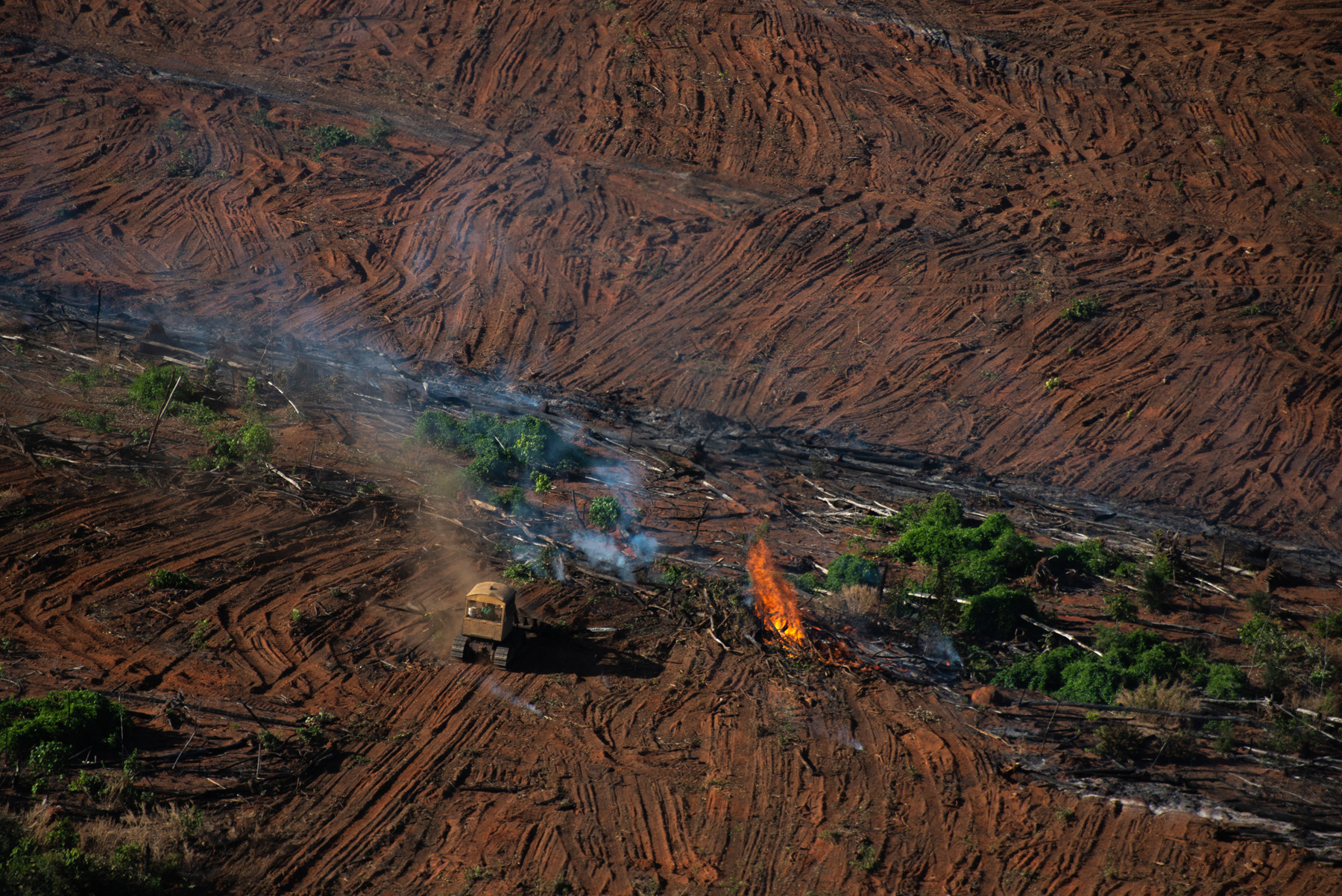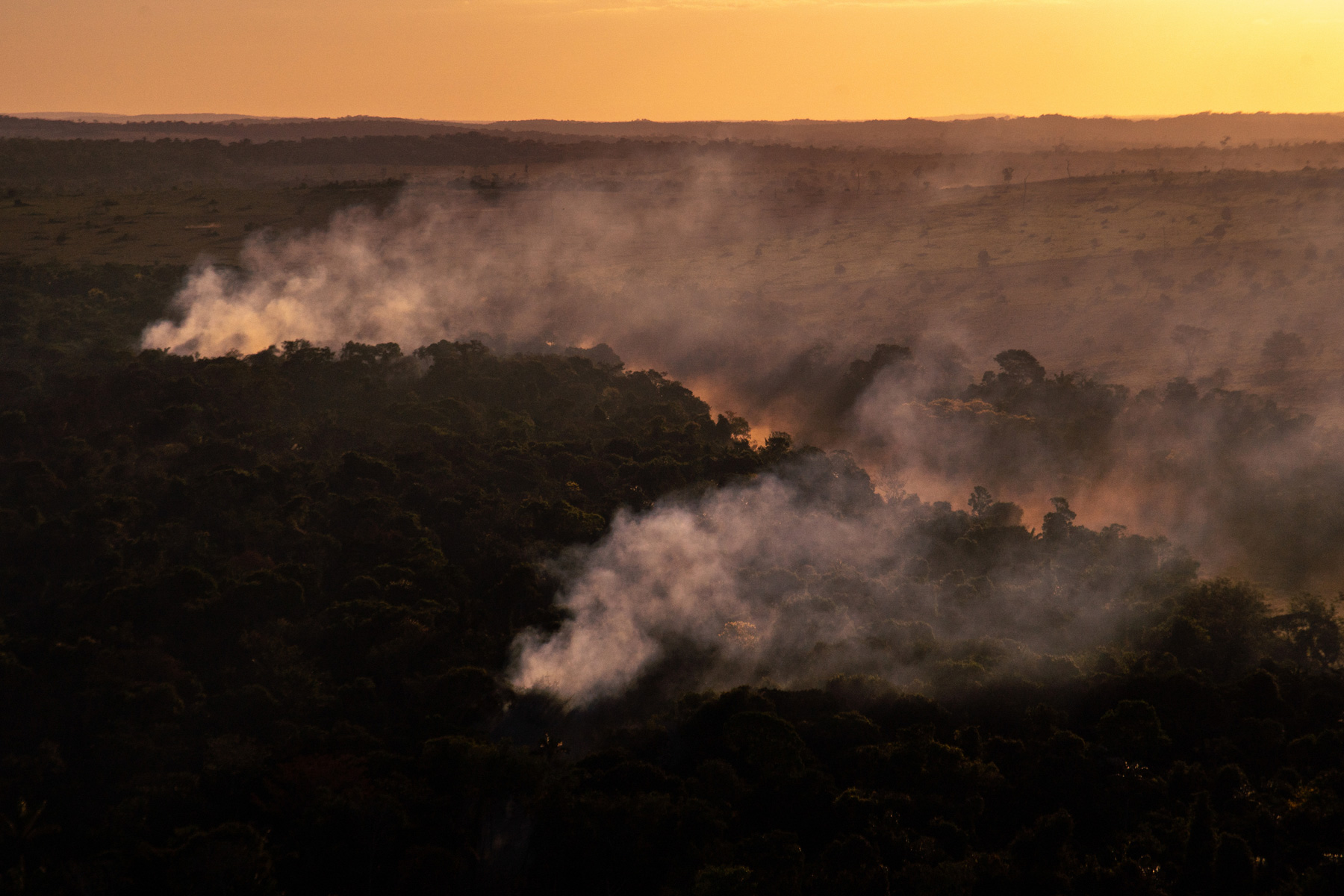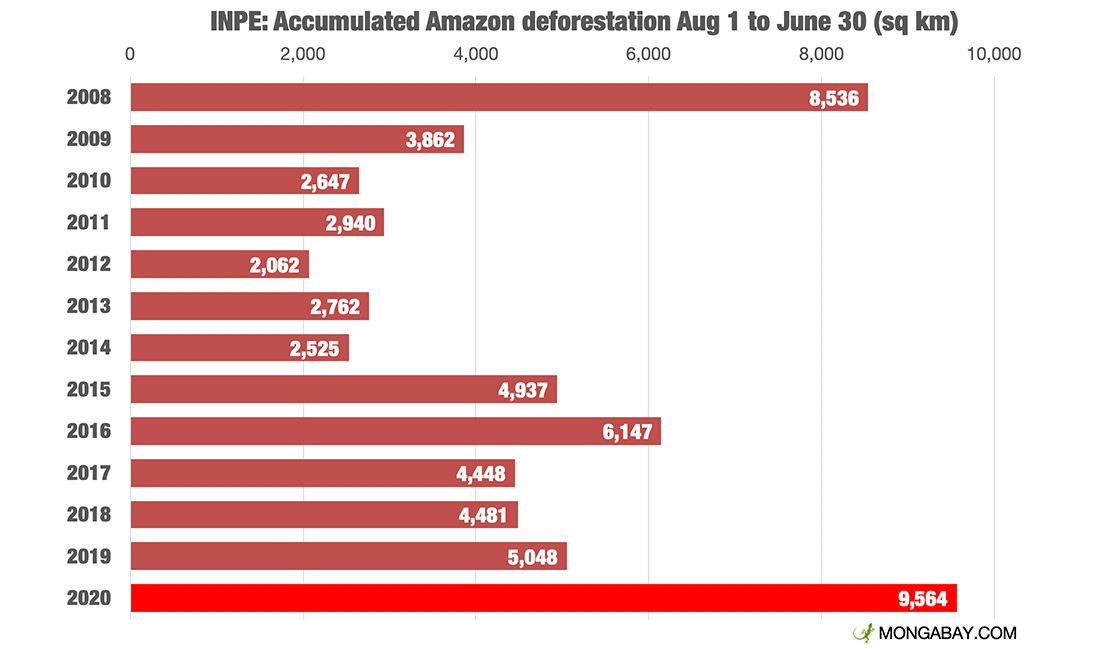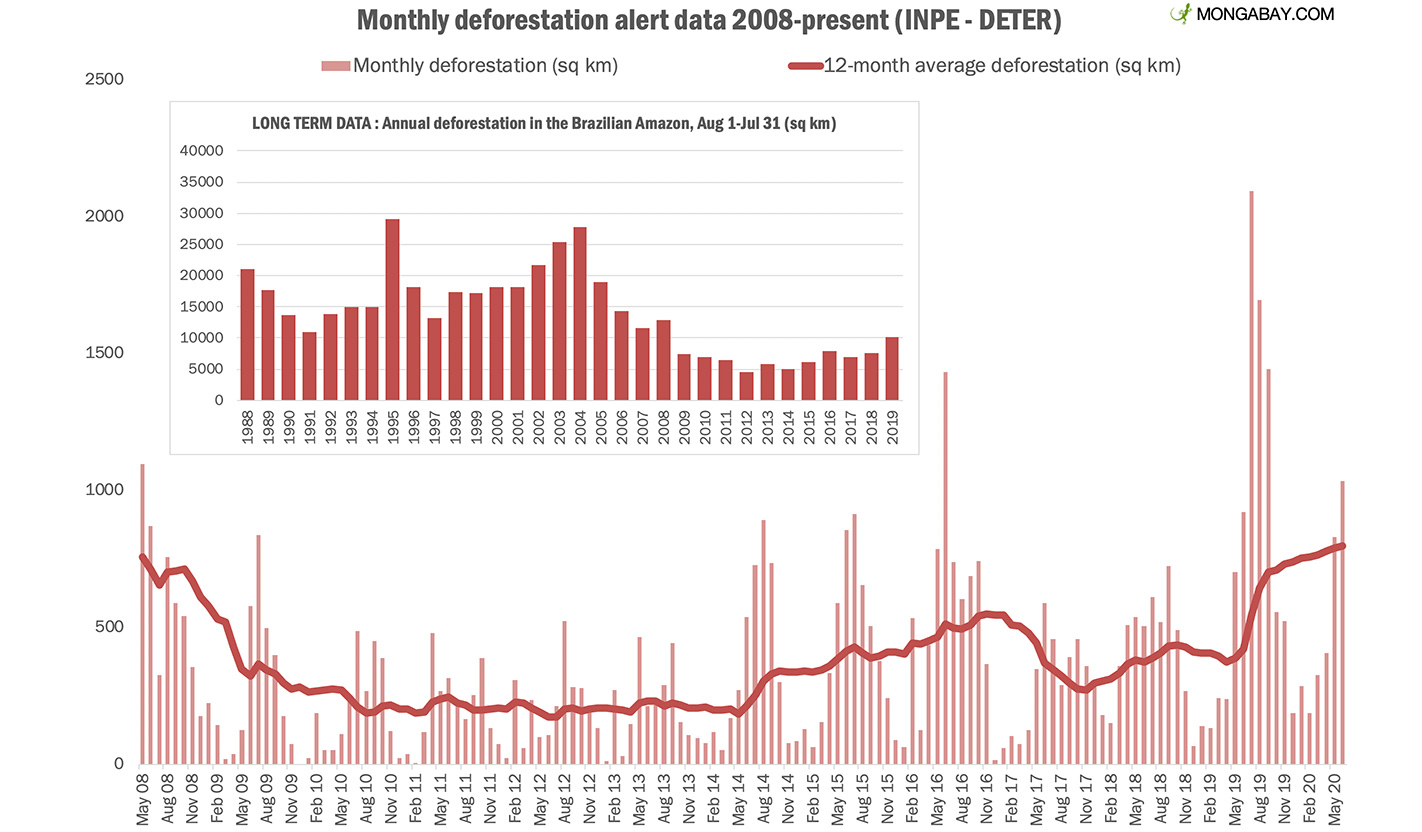- Landholders in the Brazilian Amazon are continuing to burn forests despite an official government ban on burning in the region, photographs released today by Greenpeace Brazil reveal.
- The photos, captured during flyovers conducted between July 7th and 10th in the state of Mato Grosso, documented fires in recently cleared areas and adjacent forests.
- Greenpeace’s photos come a week after Brazil’s national space research institute INPE released data showing deforestation in the Brazilian Amazon has increased for the past 15 consecutive months, putting the 12-month rate 96% higher than when Brazilian President Jair Bolsonaro took office in January 2019.
- Independent assessments of the situation in the Amazon by Imazon, a Brazilian NGO, and the Amazon Conservation Association’s MAAP Initiative, an international NGO, are consistent with INPE’s data, showing a strong increase in forest loss this year.
Farmers, ranchers, and land speculators in the Brazilian Amazon are continuing to burn forests despite an official government ban on burning in the region, reveal photographs released today by Greenpeace Brazil.
The photos, captured during flyovers conducted between July 7th and 10th in the state of Mato Grosso, documented fires in recently cleared areas and adjacent forests. Greenpeace said it also found evidence of “areas being prepared for burning” in spite of “an absolute moratorium” on fire decreed last week by Brazilian Vice President Hamilton Mourão.


Greenpeace Brazil campaigner Romulo Batista said the photos show the government needs to take more active measures to control fires and deforestation in the Amazon.
“As Bolsonaro’s 2019 fire moratorium already showed, banning fires alone doesn’t work,” said Batista in a statement. “Protecting the capacity to monitor and stop environmental destruction and to enforce the law – which Bolsonaro continues to systematically dismantle – is essential.”


Greenpeace’s photos come a week after Brazil’s national space research institute INPE released data showing deforestation in the Brazilian Amazon has increased for the past 15 consecutive months, putting the 12-month rate 96% higher than when Brazilian President Jair Bolsonaro took office in January 2019.
The Bolsonaro administration responded to that news by removing Lubia Vinhas as general coordinator for INPE’s Earth Observation Agency, which oversees Amazon deforestation monitoring.
Last year, the administration fired INPE Director Ricardo Galvão after the agency released data showing a sharp increase in Amazon deforestation.


Independent assessments of the situation in the Amazon by Imazon, a Brazilian NGO, and the Amazon Conservation Association’s MAAP Initiative, an international NGO, are consistent with INPE’s data, showing a strong increase in forest loss this year.
The MAAP Initiative is now tracking individual fires burning in forests and recently cleared forest areas to distinguish these damaging conflagrations from agricultural fires. MAAP has documented 14 fires on land that was deforested between 2018 and 2020 in Mato Grosso since late May, a stark contrast to the 4,437 hotspots identified by satellite across the state so far this year.


Experts expect the fire season to be especially bad this year due to rising deforestation.
“Fires are associated with deforestation. In order to reduce their number, we have to reduce the deforested area,” Ane Alencar, science director of IPAM, the Institute for Environmental Research in the Amazon, told Mongabay. “Deforestation is increasing every month compared to last year, when it went up very much compared to previous years.”
Last year, deforestation in the Brazilian Amazon hit the highest level since 2008, topping 10,000 square kilometers. At the end of June, deforestation was pacing 89% ahead of last year’s rate.
The rise in deforestation isn’t surprising to environmentalists given the Bolsonaro administration’s policies and rhetoric on the Amazon. Bolsonaro — who campaigned on the promise to open up the Amazon to more mining, ranching, and logging at the expense of protected areas and indigenous territories — has cut environmental law enforcement budgets, weakened laws intended to protect the Amazon, attacked NGOs and environmental activists, and hollowed out scientific institutions in the government like INPE.
“These images, along with the record deforestation rates this year, are the intended outcome of Bolsonaro’s long term strategy for the Amazon,” said Greenpeace’s Batista. “His government has been dismantling environmental protection laws and kneecapping the power of the environmental protection agencies since Bolsonaro took office, going as far as using the COVID-19 pandemic as a smokescreen to further enable deforestation, logging and mining in the Amazon. This administration is doing nothing but putting the climate and more lives at risk, especially those of Indigenous Peoples.”

